The observant reader has probably already discerned (from articles such as my introduction to Xita part 1 and part 2, or from my overview of halal food in Shenyang) that I am a huge foodie. And one of my favorite Chinese foods ever is hotpot (火锅 in Chinese, huǒ guō in pinyin, literally ‘firepot‘).

Especially in winter. The more miserable the weather outside, the more I want to huddle beside a pot of bubbling broth, throw all kinds of yummy ingredients inside, then pair them with delicious sauces, before I gorge myself on them. To me, it is one of the most social of culinary treats, because everyone gets to share and enjoy the food together.
My love of Hotpot goes so far that I actually started a tradition with some friends, where we went to a different Hotpot restaurant every single Friday for months, on an epic quest to find the best one in all of Shenyang. When summer came, though, people decided that just Hotpot was a bit limiting, so our “Hotpot Friday” was turned into a “Foodie Friday” instead and opened up to other culinary traditions.
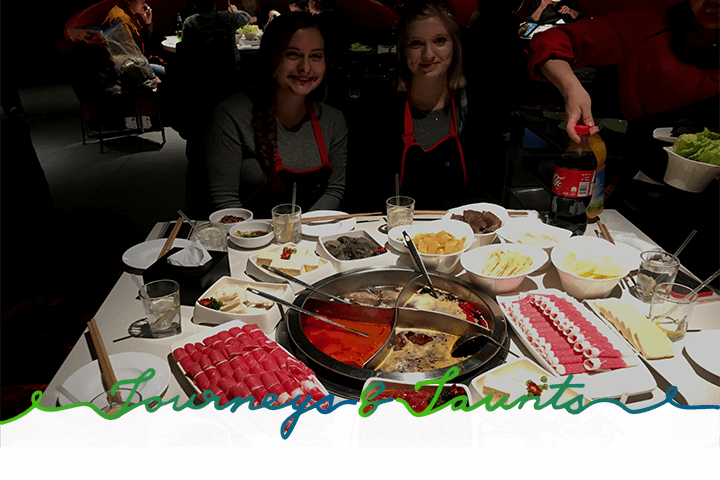
Nevertheless, before Foodie Friday came into being, we had the chance to try out scores of different kinds of Hotpot: Sichuan style, Beef Hotpot, Northeastern (i.e., Dongbei) style, Fish Hotpot, Yunnan style, and more. And now, I want to let you all benefit from our research, and present my favorite restaurants in Shenyang for several different styles of Hotpot. Because, contrary to popular belief, it’s not “all just the same anyway.” See the overview below to discover the subtle differences and find the Hotpot that is perfect for you. And if you are in doubt, try them all and make up your mind as to which one is best.
Sichuan Hotpot or Chongqing Hotpot
Even if you are not a Hotpot connoisseur, you will at least have heard of or seen this kind of Hotpot before. Sichuan cuisine is famed for its hotness, they primarily use plenty of Sichuan peppercorns (which, if you have the misfortune of biting into one, will make your entire mouth numb), so it comes as no surprise that the Hotpot should be spicy, too.
Many restaurants will offer two different kinds of broth together in one pot, a so-called Yin and Yang pot (鸳鸯锅 in Chinese, yuānyang guō in pinyin, literally ‘mandarin duck pot’). The advantage of such a contraption is that lovers of spice and those who are more mildly inclined food-wise can enjoy Hotpot at the same time.
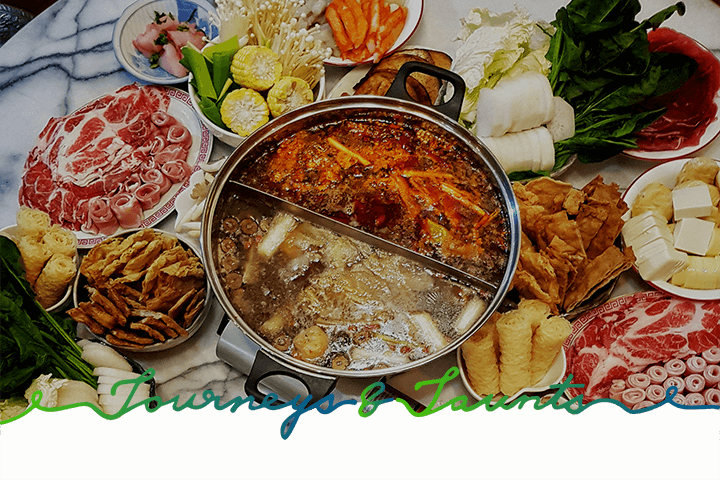
Typical ingredients that are added to the soup base are frozen and then very thinly sliced mutton or beef, various vegetables, tofu, glass noodles, etc. For the spicy soup base, mixing sesame oil, chopped garlic, and spring onions is a favorite dipping sauce. The oil is supposed to ‘cut’ the spiciness.
Another ubiquitous dipping sauce for Sichuan and Chongqing Hotpot is sesame sauce (sometimes with peanuts inside).
My husband maintains that Sichuan Hotpot restaurants should be ranked according to the quality of their sesame sauce. Because for him, the sauce will make or break his Hotpot experience.
Meijin Hotpot (the one on Taiyuan Street!)
In Shenyang, there are two Sichuan-style Hotpot restaurants I favor. One, near Taiyuan Street, is called 美津最成都辣道火锅 (měijīn zuì chéngdū là dào huǒguō in pinyin). Meijin Hotpot is a popular chain with outlets all over Shenyang, but this one is different (I think: waaay better) than the other branches. I like the cozy atmosphere there, and the servers are always incredibly kind to us. The soup is tasty, the sauce yummy (my husband’s requirement, not mine), and the choices for what to add to the broth is pretty good, too.

The restaurant is located on number 20, Taiyuan North Street (太原北街20号 in Chinese, tàiyuán běi jiē 20 hào in pinyin). In general, reservations are not necessary, while there are always customers there, you can probably get a table with little waiting time. They are open every day from 10:30 am until 02:00 in the early morning.
Haidilao Hotpot
A second Sichuan-style Hotpot restaurant I can recommend is any of the outlets of 海底捞 (hǎi dǐ lāo in pinyin) in the city. Haidilao has several aspects that recommend them.
First of all, their food is good (which should of course always be the basic requirement). They have a wide variety of different soup bases to choose from, both spicy and less so. The dipping sauces are tasty and can be assembled according to your taste from a sort of build-your-own-sauce buffet. The range of ingredients you can add to the pot is also vast, and the food is fresh and of good quality.

But what differentiates Haidilao from many other Hotpot restaurants is their quality of service. If you have to wait for your table (a distinct possibility, even with a reservation, because they are so busy), you get free snacks and something to drink to dull your hunger pains. There are often some games (dice or cards, mostly) to while away the time, as well. And most (maybe all, I am not sure) branches of Haidilao even offer you a complimentary manicure while you wait – subject to the availability of the manicurists, of course.
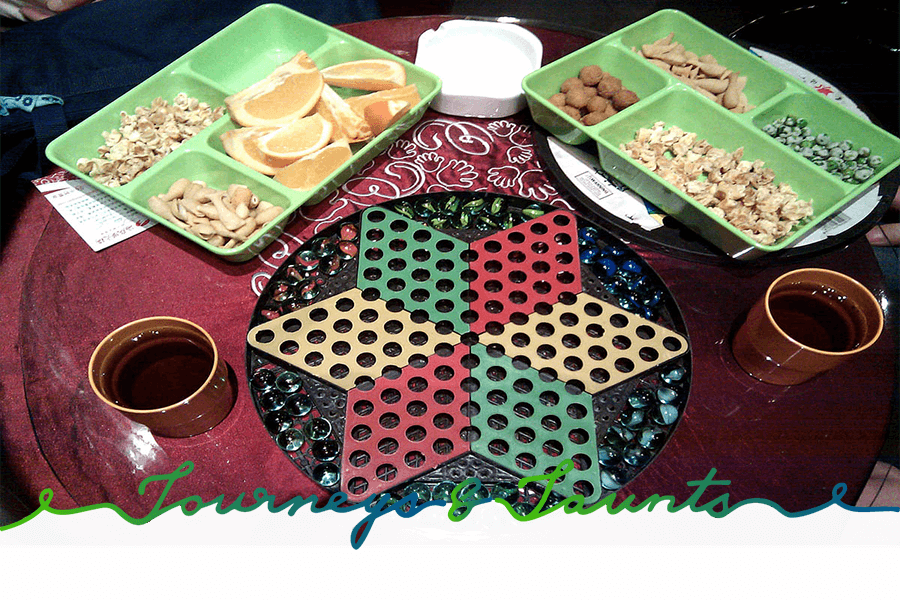
When you get your table, you will be provided with a plastic cover for your cell phone (so it doesn’t suffer from potential Hotpot soup splatter), with a hair tie if you have long hair, with a bib (should you require one), etc. Those small thoughtful touches make service at Haidilao different from many other Hotpot chains.
And the third reason why you should check Haidilao out is their noodle dance.
When you order the hand-pulled noodles (捞面 in Chinese, lāo miàn in pinyin), they come as a lump of dough to your table. A server will then turn that dough into noodles. To do so, he pulls on the chunk, then proceeds to twirl and fling it around, until it turns into one long, uniform, flat noodle that can be cut into smaller pieces. The whole thing looks quite artistic, and there is a secret thrill to whether it will all turn out okay.
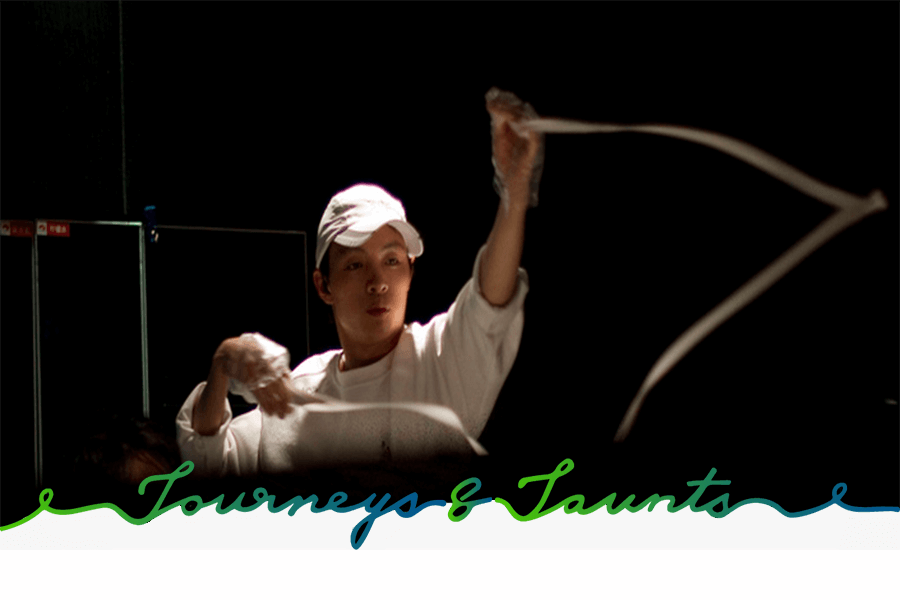
No need for fear, though, if the noodle touches the floor or the heads of other diners at any point in time, they will start from the beginning with a new blob of dough. I had an inexperienced noodle dancer once, who had to ‘dance’ for us a total of 3 times until he finally got it right…
Haidilao Hotpot restaurants are all over town. If you live in or near Tiexi District, for instance, you can go to the branch on the 4th floor of the Tiexi Wanda Plaza at 58-20 Xinghua South Street (兴华南街58-20万达广场 in Chinese, xìnghuá nán jiē 58-20 wàndá guǎngchǎng in pinyin).

Opening hours are from 10:30 am until 03:00 in the morning, 7 days a week.
Beef Hotpot
Another Hotpot style I enjoy immensely is Beef Hotpot. This kind – you’ve probably guessed it – relies heavily on beef as the main meat ingredient and is often made with beef broth as a soup base, as well.

Most restaurants specializing in beef Hotpot are also famed for their cow’s stomach, which – if you are adventurous enough – makes for a delicious addition to any Hotpot.

The secret to delicious cow’s stomach in your Hotpot is to only dip the stomach into the soup base for a very short time. Opinions might differ, but I have been told that you need to swish the piece of stomach through the soup exactly 7 times for the best results.
Mo Cuo Men Cow’s Stomach Hotpot
An excellent Beef Hotpot restaurant which I can only recommend is 摸错门牛犊火锅 (mō cuò mén niúdú huǒguō in pinyin). The one I’ve tried was in Heping District, at 39, Guangrong Street (光荣街39号 in Chinese, guāngróng jiē 39 hào in pinyin).

I believe they have other branches as well, but I am not sure where. The branch in Heping District is open every day from 10:00 until 22:00.
Fish Hotpot
What if you are not a huge meat-eater, you ask? If that is the case, I have an alternative you might like: Fish Hotpot. Instead of paper-thin slices of meat, this style of Hotpot has a sort of fish carpaccio that goes into the soup base.
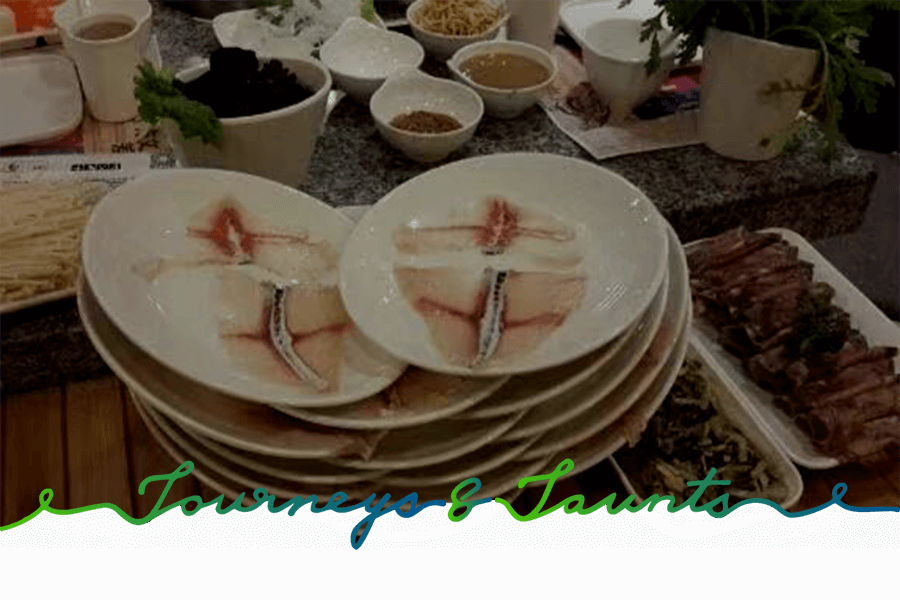
Any number of white-fleshed fish can be used for this. Fish Hotpot often has a milder soup base, so as not to overpower the flavor of the fish.
Jiang Xiao Yu Grouper Hotpot
My favorite for Fish Hotpot in Shenyang would have to be 江小鱼斑鱼火锅 (jiāng xiǎo yú bānyú huǒ滇草香云南原生态汤火锅guō in pinyin), at 39, Nanwu Malu (南五马路39号 in Chinese, nán wǔ mǎlù 39 hào in pinyin).
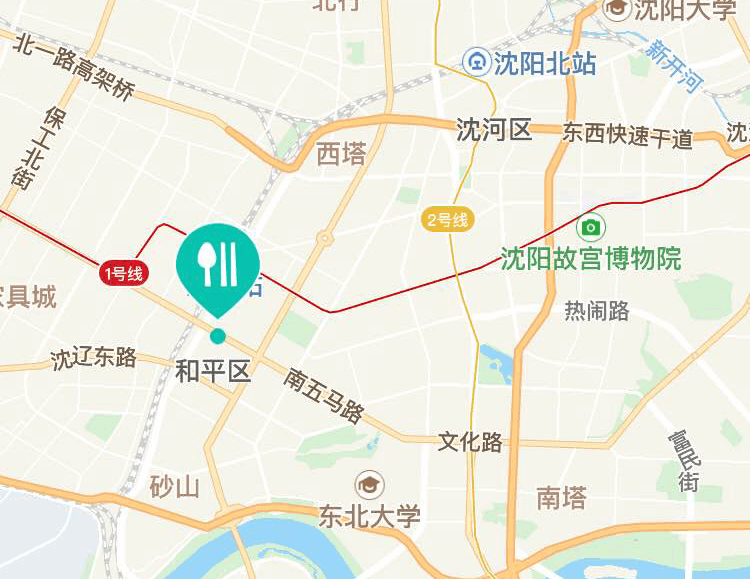
The restaurant is open every day of the week, from 11:00 until 21:00. So, for dinner, you should contemplate going a bit early. This way, you have plenty of time to gorge yourself.
Yunnan style
If Hotpot with a less prominent soup base is your thing, then there is another style of Hotpot you would love: Yunnan Hotpot. The particularity of this variety is that it often comes with a soup base made from different mushrooms native to Yunnan.
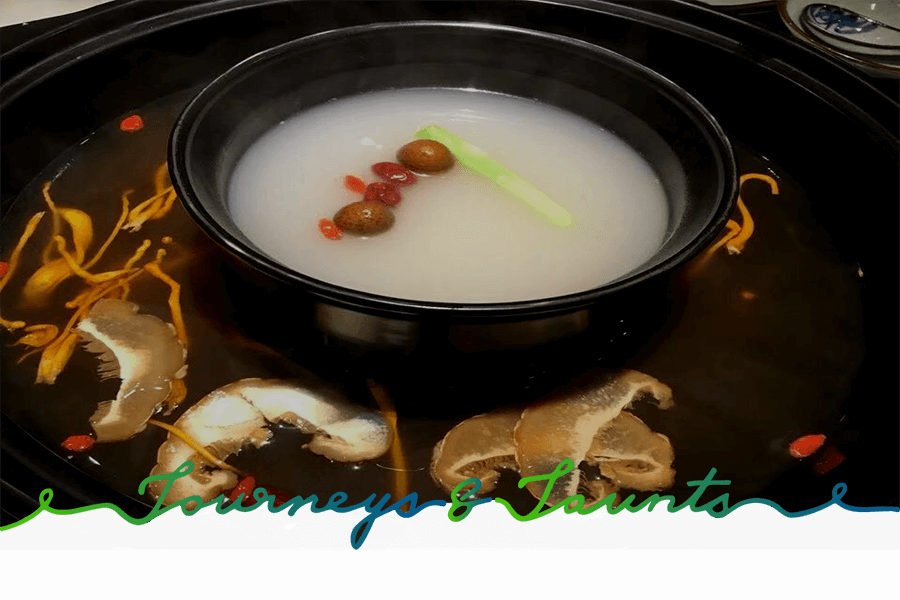
The broth is very fragrant and not spicy, so as not to take away from the aroma of the mushrooms. The sauces are also a tad different for this Hotpot alternative.
Dian Cao Xiang Yunnan Hotpot
The best of all the Yunnan-style Hotpots I have tried in Shenyang is 滇草香云南原生态汤火锅 (diān cǎo xiāng yúnnán yuán shēngtài tāng huǒguō in pinyin). There is one on the 6th floor of Kaisa Mall on Qingnian Avenue (青年大街佳兆业 in Chinese, qīngnián dàjiē jiā zhào yè in pinyin).
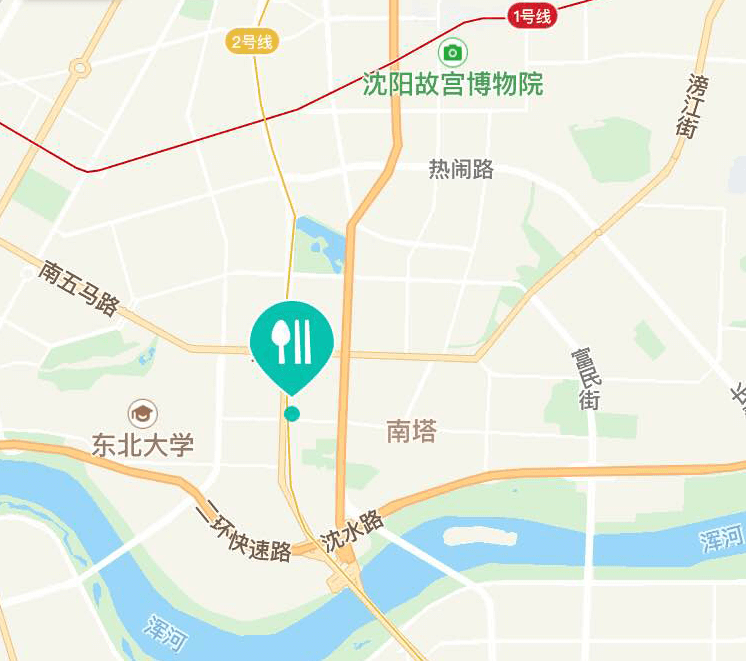
The restaurant’s opening hours are 10:00-22:00 every day.
Beijing Hotpot
If even the mild mushroom broth is too intense for you, maybe Beijing Hotpot would be more your speed. The exciting thing about this kind of Hotpot is its preparation.
Instead of a flat pot with bubbling broth, it comes in a sort of volcano with a ring attached around the crater. Burning coals are filled inside the cone (what I call the volcano crater), and as they heat the metal, they also heat the water in the ring attached to it. Yes, you read that right, this Hotpot is made with water instead of a soup base.

The ‘volcano’ will proceed to belch steam from the coals, which makes for a pretty picture. And the more ingredients you put into the water to boil, the more flavor it will have. At the end of your meal, you will have made your very own ‘soup,’ based on the kinds of ingredients you have added. This Hotpot style usually invites you to have a bowl of your creation to round out your meal.

I personally am not the biggest fan of Beijing Hotpot. While I can appreciate the entertainment factor of eating from my own personal table volcano, I find cooking my ingredients in water instead of a soup a distinct letdown.
Beijing Donglaishun Hotpot
But if you want to give it a try, anyway, you should go to 北京东来顺饭庄 (běijīng dōngláishùn fàn zhuāng in pinyin, Beijing Donglaishun Culinary Farm in Chinglish). There is one branch in Heping District that I have been to, at 42, Guangrong Street (光荣街42号 in Chinese, guāngróng jiē 42 hào in pinyin). It is opposite the Beef Hotpot restaurant I introduced to you earlier. But I would not recommend trying both of them in the same evening – that would be suicidal!

The restaurant is open every day from 10:00-22:00.
Manchurian Hotpot (or Dongbei or Northeastern Hotpot)
I have kept my very favorite kind of Hotpot from this entire list for last. Since we live in China’s Northeast (东北 in Chinese, dōngběi in pinyin), we get to enjoy a regional variant of Hotpot that is entirely different from anywhere else in China – Manchurian (or Dongbei, or Northeastern) Hotpot.
This style of Hotpot combines the fun elements of Beijing Hotpot with the yumminess of Dongbei cuisine. The pot in which it is prepared is the same smoky, steamy, scalding volcano pot described above. But instead of tasteless (if healthy) plain water, the container comes fully stocked with a thick soup containing Chinese sauerkraut, pork belly, oysters and other seafood, frozen tofu, and many other ingredients. I almost want to call it a stew, it is that rich and flavorful.
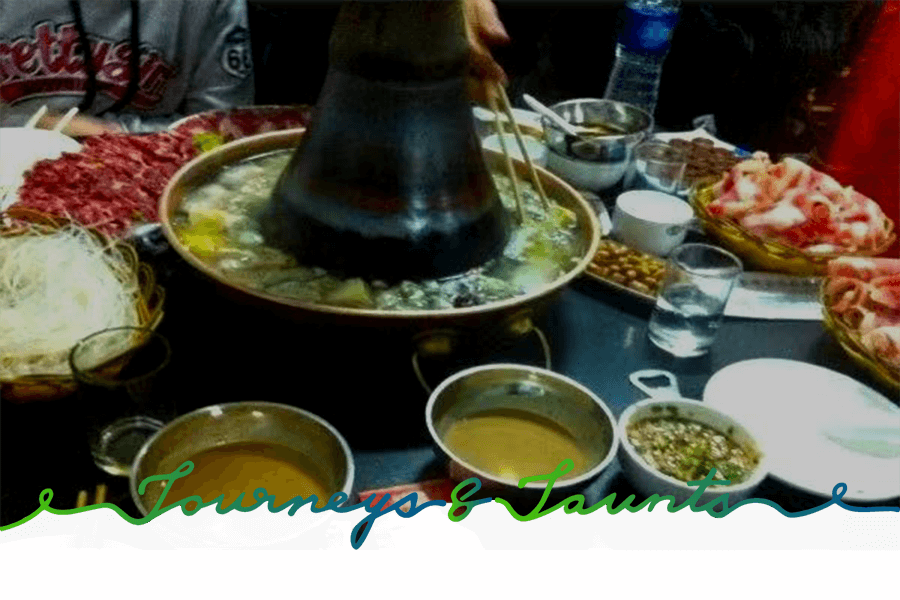
The main soup base in Manchurian Hotpot is almost all you need for a full meal. But, seeing as it is Dongbei food, you tend to add yet more ingredients – mostly of the kind you would see in other types of Hotpot as well. So, in addition to the thrill of not knowing what you will discover already in the soup, you get to add your favorite other ingredients as well.
Baiyuan Hotpot
If you want to enjoy authentic Manchurian Hotpot in Shenyang, you have to try Baiyuan Hotpot (佰源火锅 in Chinese, bǎiyuán huǒguō in pinyin). This place is not for Hotpot (and China) novices, nor is it recommended for the queasy of stomach. But if you are up for an adventure, you will love it!
The reason I introduce this place with a cautionary notice is that it is not the cleanest venue I have ever frequented (nor is it the dirtiest, but that doesn’t mean much). It is also small, dingy, and has big billowing clouds of smoke rising to the low ceiling, both from the pots and the cigarettes of the patrons.
But the food is sooo worth it. The broth (stew?) is rich, sooo flavorful, and quintessentially Dongbei. The restaurant is tiny, so if you plan on going with a group, make sure to reserve a table. The restaurant is located in Shenhe District, at 60, Nan Er Jing Street (南二经街60号 in Chinese, nán èr jīng jiē 60 hào in pinyin).

It is a little mom-and-pop operation, so their opening hours are less customer-friendly than the other places on this list. In winter, they are open from 11:30 to 14:00, and from 16:30 until 21:00. In the summer, they even close at 20:00 in the evenings. Seems counter-intuitive, but the simple reason is that summers are the down season for most Hotpot restaurants, so there is no reason for them to remain open until ‘late.’
I hope you have enjoyed my little overview of where to eat which type of Hotpot in Shenyang. Have I left any major Hotpot variant out? Is your favorite Hotpot place not on the list? Let me know in the comments. And also tell me if you tried any of the recommendations, I LOVE feedback!





Pingback: 24 Solar Terms - Minor Cold | Journeys & Jaunts